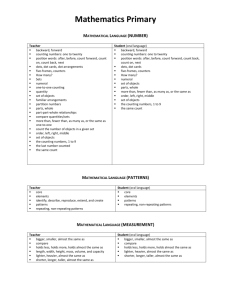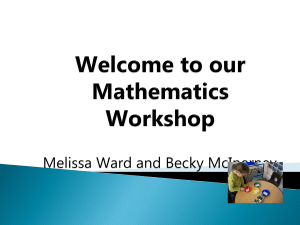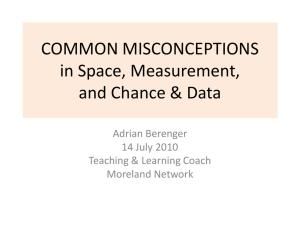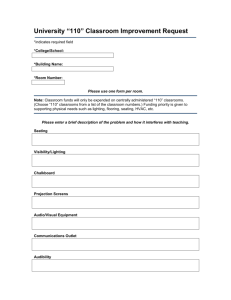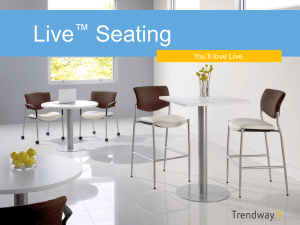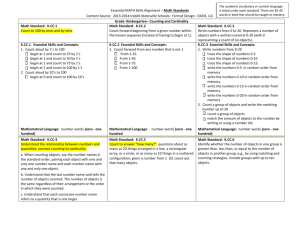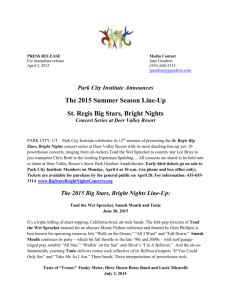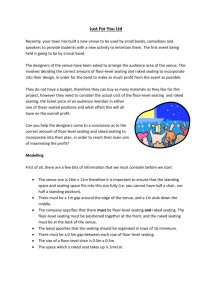MATHEMATICAL Elements in the BLEX Project:
advertisement
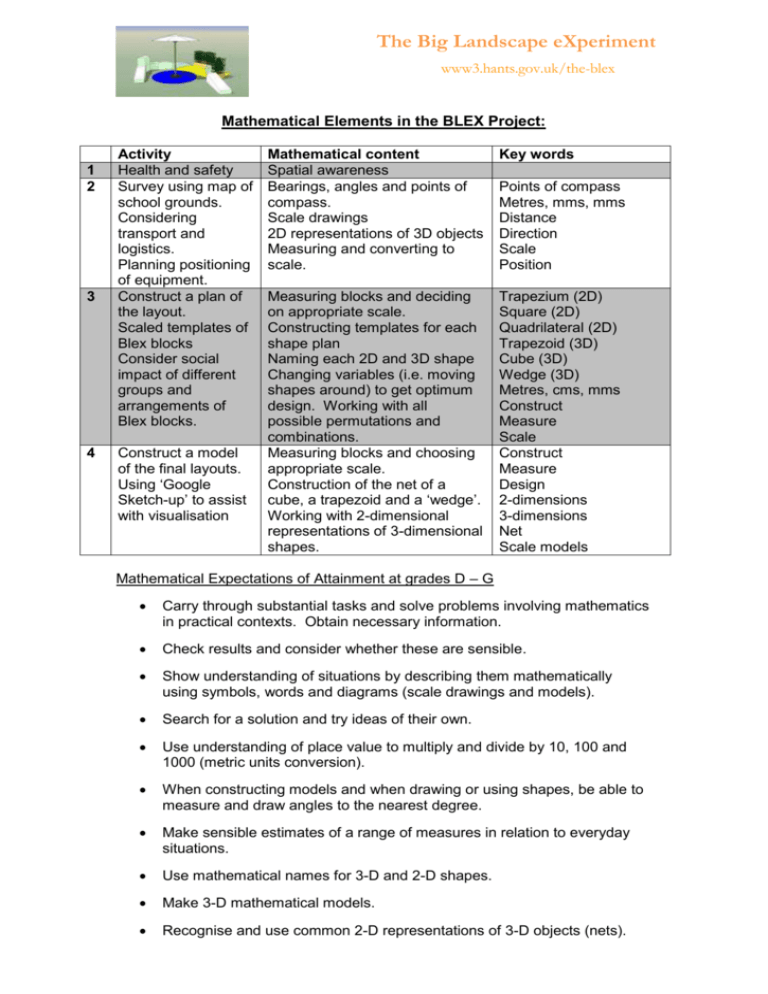
The Big Landscape eXperiment www3.hants.gov.uk/the-blex Mathematical Elements in the BLEX Project: 1 2 3 4 Activity Health and safety Survey using map of school grounds. Considering transport and logistics. Planning positioning of equipment. Construct a plan of the layout. Scaled templates of Blex blocks Consider social impact of different groups and arrangements of Blex blocks. Construct a model of the final layouts. Using ‘Google Sketch-up’ to assist with visualisation Mathematical content Spatial awareness Bearings, angles and points of compass. Scale drawings 2D representations of 3D objects Measuring and converting to scale. Key words Measuring blocks and deciding on appropriate scale. Constructing templates for each shape plan Naming each 2D and 3D shape Changing variables (i.e. moving shapes around) to get optimum design. Working with all possible permutations and combinations. Measuring blocks and choosing appropriate scale. Construction of the net of a cube, a trapezoid and a ‘wedge’. Working with 2-dimensional representations of 3-dimensional shapes. Trapezium (2D) Square (2D) Quadrilateral (2D) Trapezoid (3D) Cube (3D) Wedge (3D) Metres, cms, mms Construct Measure Scale Construct Measure Design 2-dimensions 3-dimensions Net Scale models Points of compass Metres, mms, mms Distance Direction Scale Position Mathematical Expectations of Attainment at grades D – G Carry through substantial tasks and solve problems involving mathematics in practical contexts. Obtain necessary information. Check results and consider whether these are sensible. Show understanding of situations by describing them mathematically using symbols, words and diagrams (scale drawings and models). Search for a solution and try ideas of their own. Use understanding of place value to multiply and divide by 10, 100 and 1000 (metric units conversion). When constructing models and when drawing or using shapes, be able to measure and draw angles to the nearest degree. Make sensible estimates of a range of measures in relation to everyday situations. Use mathematical names for 3-D and 2-D shapes. Make 3-D mathematical models. Recognise and use common 2-D representations of 3-D objects (nets). The Big Landscape eXperiment www.hants.gov.uk/landscape-andheritage/the_big_landscape_experiment1 Information Technology Elements in the BLEX Project: 1 2 3 4 Activity Planning a seating area for the school on paper Scale of objects, representing real life objects to scale. Creating the seating area. Able to produce a seating area using ICT. Reflecting on skills learned ICT content The importance of planning on paper first. Obtaining feedback from peers. Using graphic software or Sketch up program to think about scale. Learning how to use the tools in such software. Rules of logic. Changing variables – shapes – discussing impact on design Key words Planning Feedback Compare each others’ seating areas and review Think about how it could be represented in real life and its impact on society. Review Feedback Society Scale Tools Logic Variables ICT Expectations of Attainment at grades D – G Create initial designs and seek feedback throughout this phase, recognising limitations and potential improvements. Use and combine graphical tools, software packages with guidance to create a seating area. Show understanding of tasks by using the correct objects in a given environment. Produce a solution using ICT. To compare solutions with alternative ideas and feedback. To reflect on work, recognising potential areas for improvement and comparing to real life situations.
